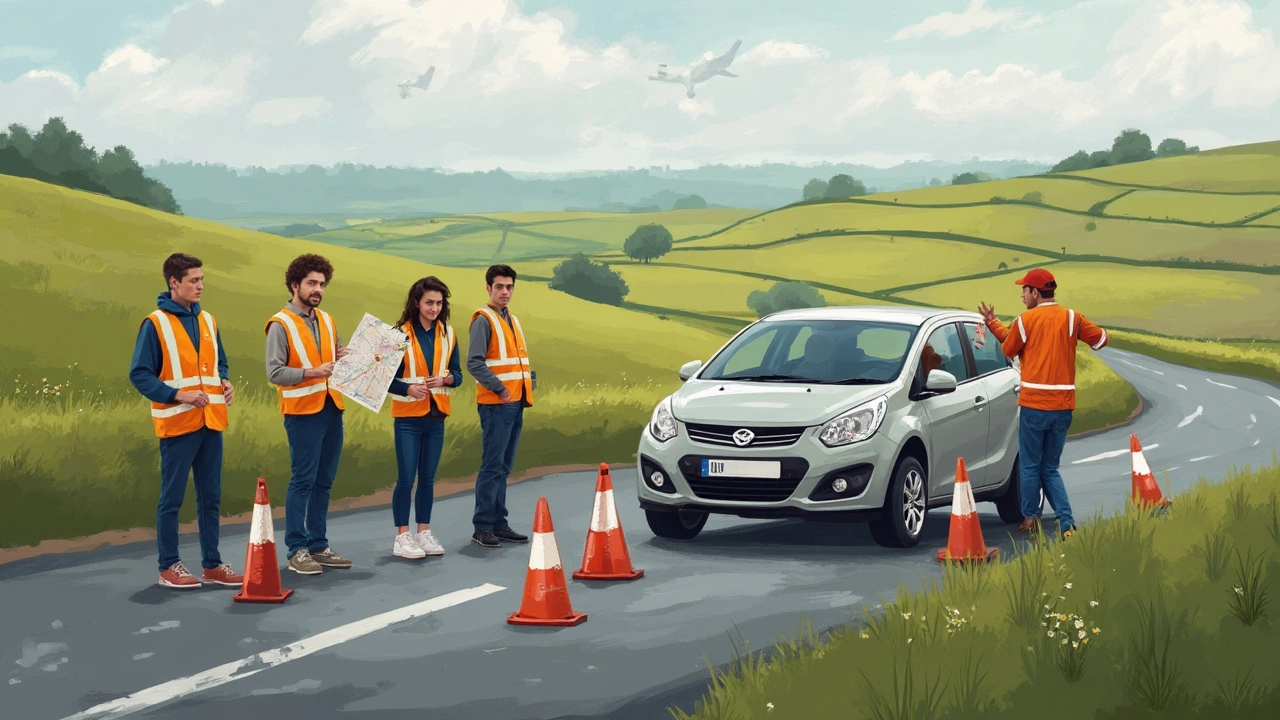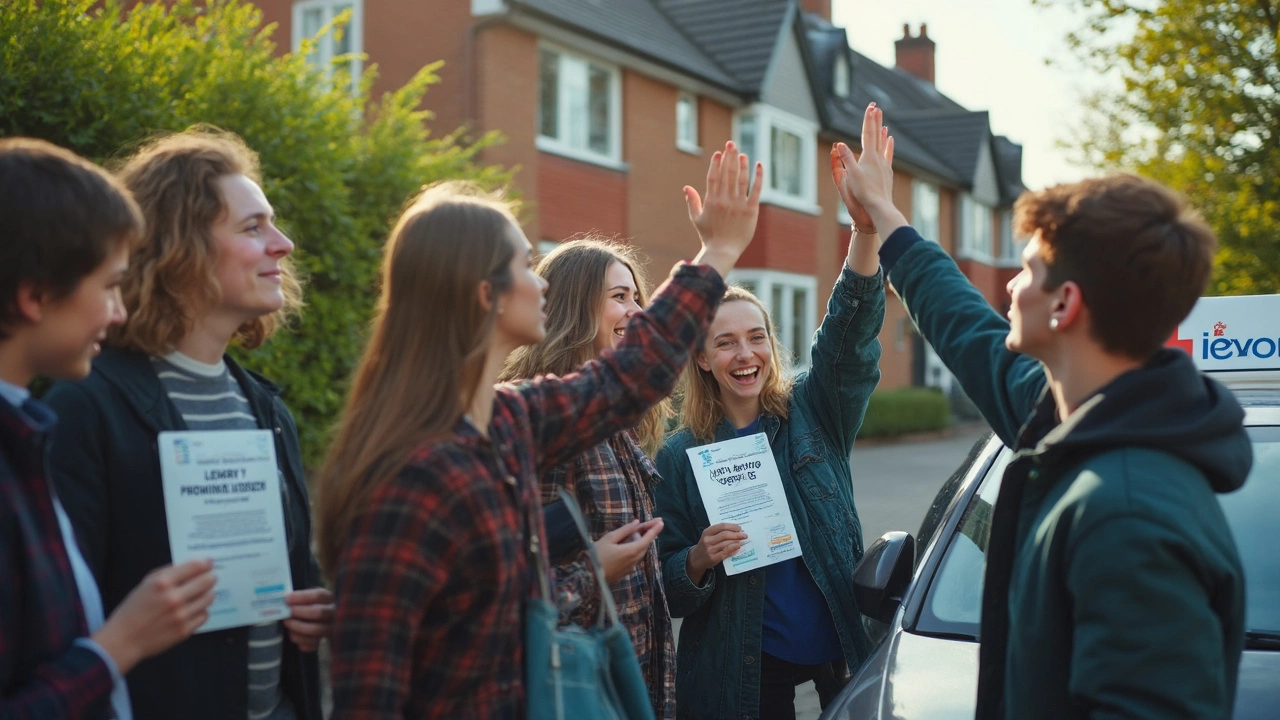Let’s be real: the driving test almost feels like a teenage rite of passage. So, at what age do most people actually bag their licence? If you picture a classroom full of 17-year-olds ready to hit the road, you’re not far off—but there are some surprises hiding in the stats. Most people take their driving test for the first time between ages 17 and 20. In the UK, where you can legally start driving at 17, this has become the sweet spot for most new drivers.
But age isn’t the only thing that matters. Some folks head straight for an intensive driving course, hoping to speed past all those drawn-out weekly lessons. Maybe you’re thinking about that route, or you’re a parent of a 17-year-old tired of bus rides—either way, knowing the right timing could save time, money, and stress.
If you want the cold, hard numbers, around 70% of driving test takers in the UK each year are under 25, with the highest pass rate often seen right around age 18. That first year after your 17th birthday? It’s a popular time to book both lessons and tests—especially with school leavers and sixth form students keen for freedom. But life doesn’t always kickstart at 17; plenty of people don’t take the plunge until their 20s, 30s, or even later, especially if they didn’t need a car before.
- The Typical Age People Pass Their Test
- Does Age Change Your Pass Rate?
- Intensive Driving Courses: Are They Worth It?
- Fast Track Tips: How to Pass Your Test Sooner
- Real-World Experiences: Stories and Surprises
The Typical Age People Pass Their Test
If you’re wondering what age most folks actually pass their driving test, the UK stats are pretty clear. Most new drivers pass between 17 and 20. You can start learning to drive at 17, so it’s no shock that the numbers spike right after that birthday.
Here’s the thing: 17- and 18-year-olds fill up the test centres. In 2024, just over 50% of all practical driving tests were taken by people aged 17 or 18. After that, the numbers drop a bit for older age groups but don’t disappear—there are plenty of late bloomers too!
Take a look at how it breaks down:
| Age | % of All UK Driving Tests | Pass Rate (%) |
|---|---|---|
| 17 | 32% | 54% |
| 18 | 19% | 53% |
| 19-21 | 19% | 51% |
| 22-29 | 15% | 48% |
| 30+ | 15% | 45% |
It seems like the younger crowd has a slight edge when it comes to passing. What’s going on? A couple of things: people tend to throw themselves full-speed into learning after turning 17, often while still at college or sixth form. Plus, it feels like a race among friends—nobody wants to be the only one in the group still waiting on lifts from Mum or Dad.
But it’s not just about age or peer pressure. You’ve got people returning to lessons later in life, maybe because they put it off or never needed to drive in the city. Life changes fast—a new job, a new family, or moving somewhere rural can suddenly make driving a must-have skill. And while pass rates dip a bit with age, determination pays off for lots of adult learners.
The driving test age trend is clear, though: if you’re between 17 and 20, you’re in good company at the test centre. Still, passing has more to do with practice (and nerves!) than just blowing out seventeen candles. So, whatever your age, you’ve got a real shot at passing if you put in the hours.
Does Age Change Your Pass Rate?
Turns out, age can make a real difference to how likely you are to pass your driving test. The official stats from the UK’s DVSA show that the pass rate is highest for people aged 17 to 19 and starts dropping off gradually the older you get. It’s not just about nerves—older learners might have busier lives, more responsibilities, or bad habits from years of not driving.
Let’s break it down with real numbers. In 2024, about 55% of 17-year-olds passed their test on the first try, while the pass rate for people in their late 20s hovered closer to 40%. If you’re over 40, that drops a bit more—think somewhere between 35% and 38%.
| Age Group | First-Time Pass Rate (2024, UK) |
|---|---|
| 17-19 | 55% |
| 20-25 | 46% |
| 26-35 | 41% |
| 36-45 | 38% |
| 46 and above | 35% |
This doesn’t mean you’re doomed if you wait until later. Often, older learners do better on the theory test, probably because they aren’t rushing or cramming last minute. And if you’re motivated (maybe sick of waiting at the bus stop with your weekly shopping), you can totally beat the stats. Just be honest about how much time you can commit, and put effort into practice outside of lessons.
For younger drivers, overconfidence sometimes trips them up. Older folks might be more cautious but can take longer to break nervous habits. If you’re aiming for a higher driving test age pass rate, set up regular lessons close together and practice consistently, no matter your age.
- More practice usually means better pass odds—whatever your age.
- Mock tests are a game changer for nerves and confidence.
- Try not to compare yourself to friends—everyone learns differently.
So, age shifts the odds, but the right prep and mindset count for way more in the end.

Intensive Driving Courses: Are They Worth It?
If you’ve ever heard about someone passing their test in just one week, they probably took an intensive driving course. Instead of spreading lessons over months, you can learn to drive over five to ten days. It’s not magic—it’s about squeezing a lot of practice into a short time frame. These courses are especially popular with students on school breaks, people changing jobs, or anyone who just can’t stand the idea of dragging things out forever.
Prices aren’t pocket change, though. On average, an intensive course will set you back anywhere from £800 to £1,500 depending on where you live. That usually includes your practical test fee and between 20 and 40 hours of professional instruction, all packed into a handful of days. If you already have some experience, there are even shorter refresher options.
Are they better for your driving test age outcome? Statistics say the pass rate for intensive courses is right around the national average—about 47% on first attempts, according to last year’s DVSA figures. The big perk is confidence: learning quickly means skills and rules stay fresh in your head. The downside? It can feel overwhelming, and some folk need more time to let things sink in.
- Great for people with a deadline—think uni students before term starts or adults who just landed a job needing a licence.
- You’ll need to block out several days in a row, so it’s not for those with busy, unpredictable schedules.
- If you have some driving basics before you start, you’ll probably make better progress in the fast-paced format.
Keep in mind: intensive isn’t always the same as easier. Quick learners tend to do well, but if you learn at a slower pace or get test nerves, regular weekly lessons might suit you better. It’s all about matching the course to your personality and your life.
Fast Track Tips: How to Pass Your Test Sooner
Everybody wants to swap those driving L-plates for a real licence as quickly as possible. If you want to avoid dragging out lessons for ages, these tried-and-true tips can help you pass your driving test faster and smarter—without cutting corners.
Intensive driving courses are designed for speed. Instead of taking a lesson a week, you could be behind the wheel every day, finishing everything in as little as one week. Many learners say these fast-track courses help them remember skills better since there’s less time to forget stuff between lessons. Research from the DVSA even shows that people who practise more than 20 hours in a short time—especially with an instructor—are likelier to pass first time.
But speed isn’t just about lessons. Here’s what really shaves time off:
- Book your theory test early. Don’t wait until you’ve had loads of lessons. You can book once you’re 17, and you need this pass before sitting the main driving test.
- Practice with a parent or friend (if insured). Extra driving at home genuinely boosts skills, and you pick up stuff you won’t get in lessons alone.
- Choose off-peak times for your test. Stats from the DVSA show weekday mornings—usually less traffic—have up to 8% higher pass rates compared to busy weekends.
- Don’t cram for the test. The last week should focus on confidence and fixing weak spots, not learning new skills.
- Sort your test date as soon as you’re ready. Lots of people wait too long and lose momentum.
If you need some numbers to back it up, check out these quick figures:
| Type of Training | Average Total Hours Needed | First Time Pass Rate (%) |
|---|---|---|
| Weekly Lessons | 45 hours (avg instructor lessons) + 22 hours private | 48 |
| Intensive Course | 30-35 hours | 56 |
The numbers are clear: those who do an intensive driving course (the most direct answer to ‘what’s the quickest way to pass?’) often pass with fewer lessons overall and have a slightly better first-time success rate.
Lastly, learn your local roads—the “show me, tell me” questions and the test’s common routes come up a lot. Ask your instructor to practise in tricky spots near your chosen test centre. If you know the awkward roundabouts or that pesky hill start, you’ll be much less likely to make a silly mistake when it matters most.

Real-World Experiences: Stories and Surprises
You hear a lot about the typical 17-year-old passing first time, but the real world throws curveballs. For every teen zooming off in their first car, there’s someone who waited until their 30s because life just got in the way—uni, moving cities, or maybe just not needing to drive until kids were in the mix (like me, juggling Arlo and Finley’s school runs). There’s no single right age to pass your driving test age—and that’s clear from people’s stories.
Earlier this year, a national survey showed that about 1 in 5 people pass on their first try, but it’s not always about nerves. Turns out, nerves actually drop the older you get—drivers in their mid-20s are less likely to panic at the roundabout than the average 17-year-old. One funny stat from the DVSA: the oldest person to ever pass their practical test in the UK clocked in at 86. Age really is just a number.
If your teen is racing to get their licence, chances are they’re booking an intensive course. My mate’s daughter blitzed hers over five days, then nailed the test at 17 and a half, barely weeks after getting her provisional licence. She swears it helped cement all the skills without overthinking.
But then there are stories on the flip side—folks who’ve taken five or six attempts, or spaced lessons out over months, then breezed through once pressure was off. Some say learning in busy cities like London or Manchester adds a few extra months compared to quieter towns, where there’s less chaos and more patience from instructors.
What’s the surprise for most? The massive sense of relief, no matter the age or the number of tries. And a lot more parents than you’d guess end up learning (or relearning) alongside their teenagers, just so everyone in the house can share driving duties. It doesn’t matter if you’re the student, the parent-turned-chauffeur, or someone finally choosing convenience over bus timetables—everyone’s journey looks a bit different, and every win feels big.

